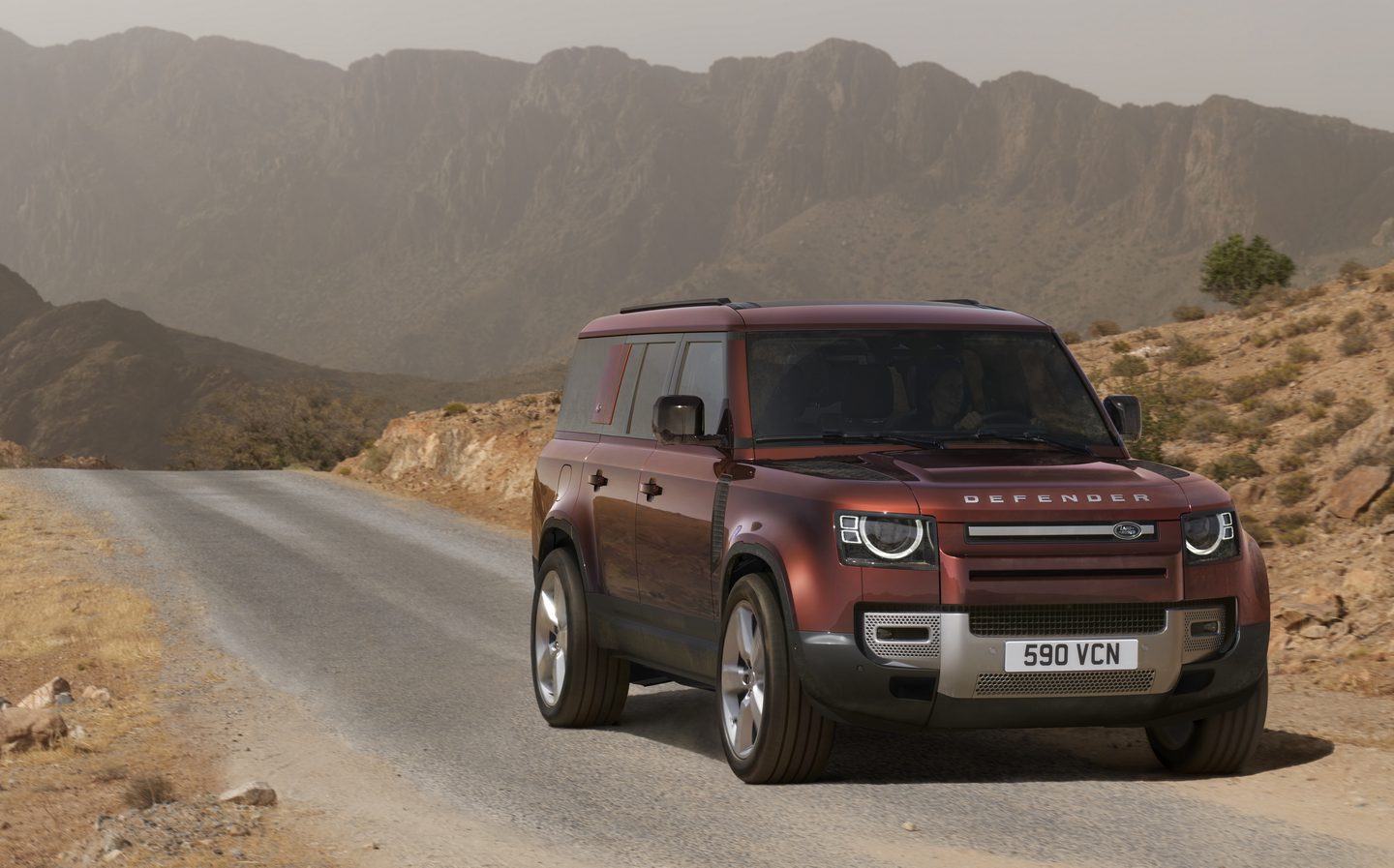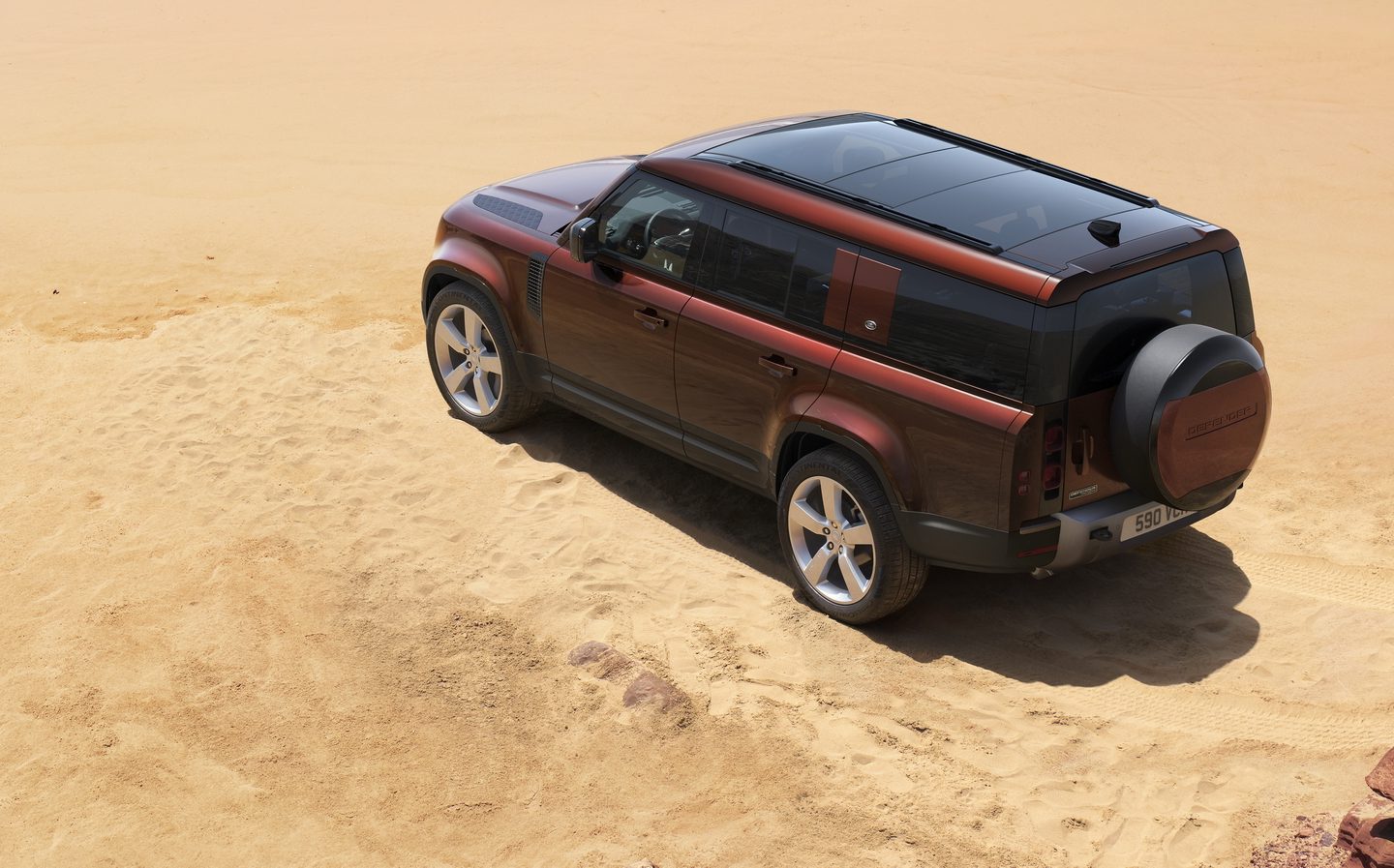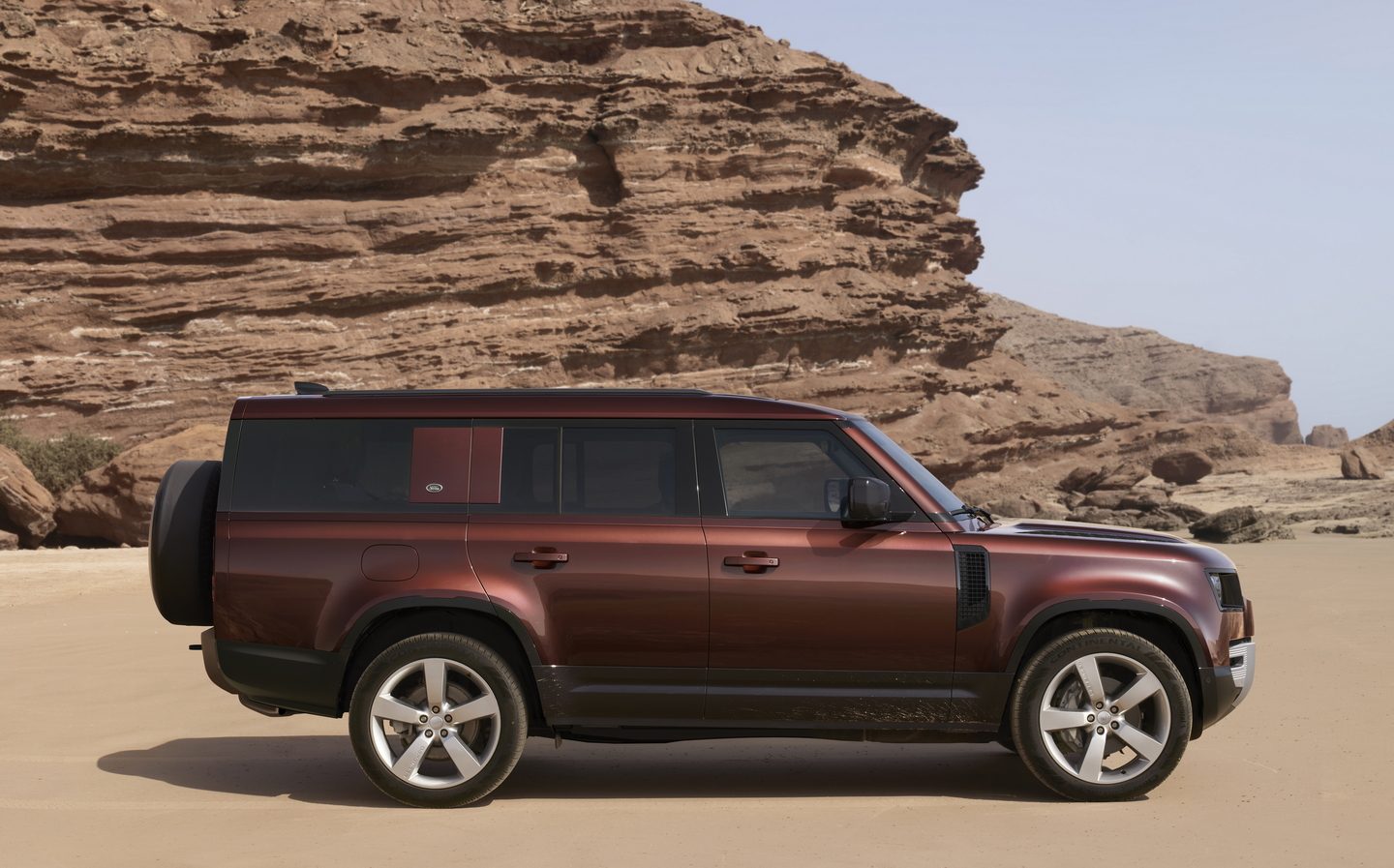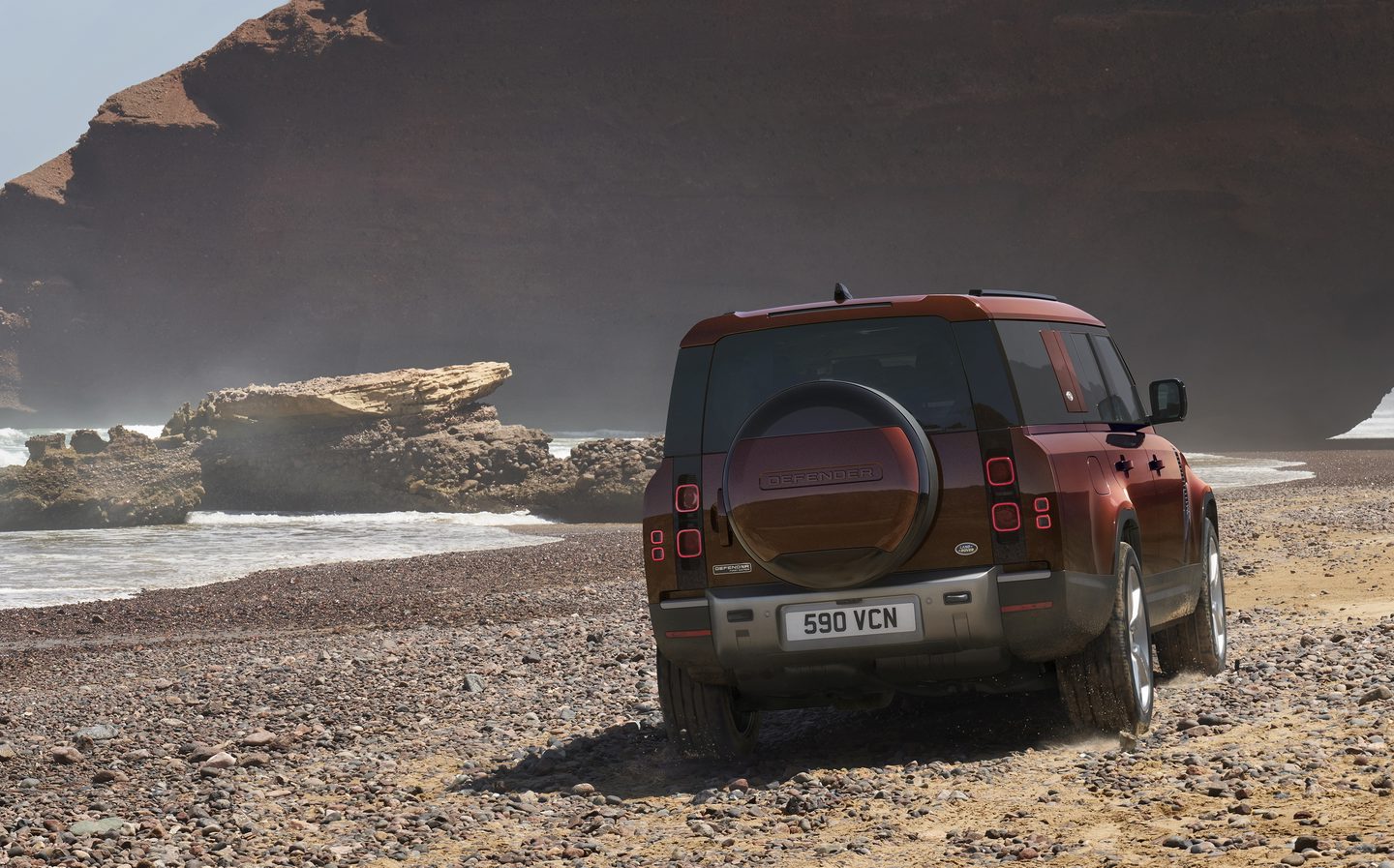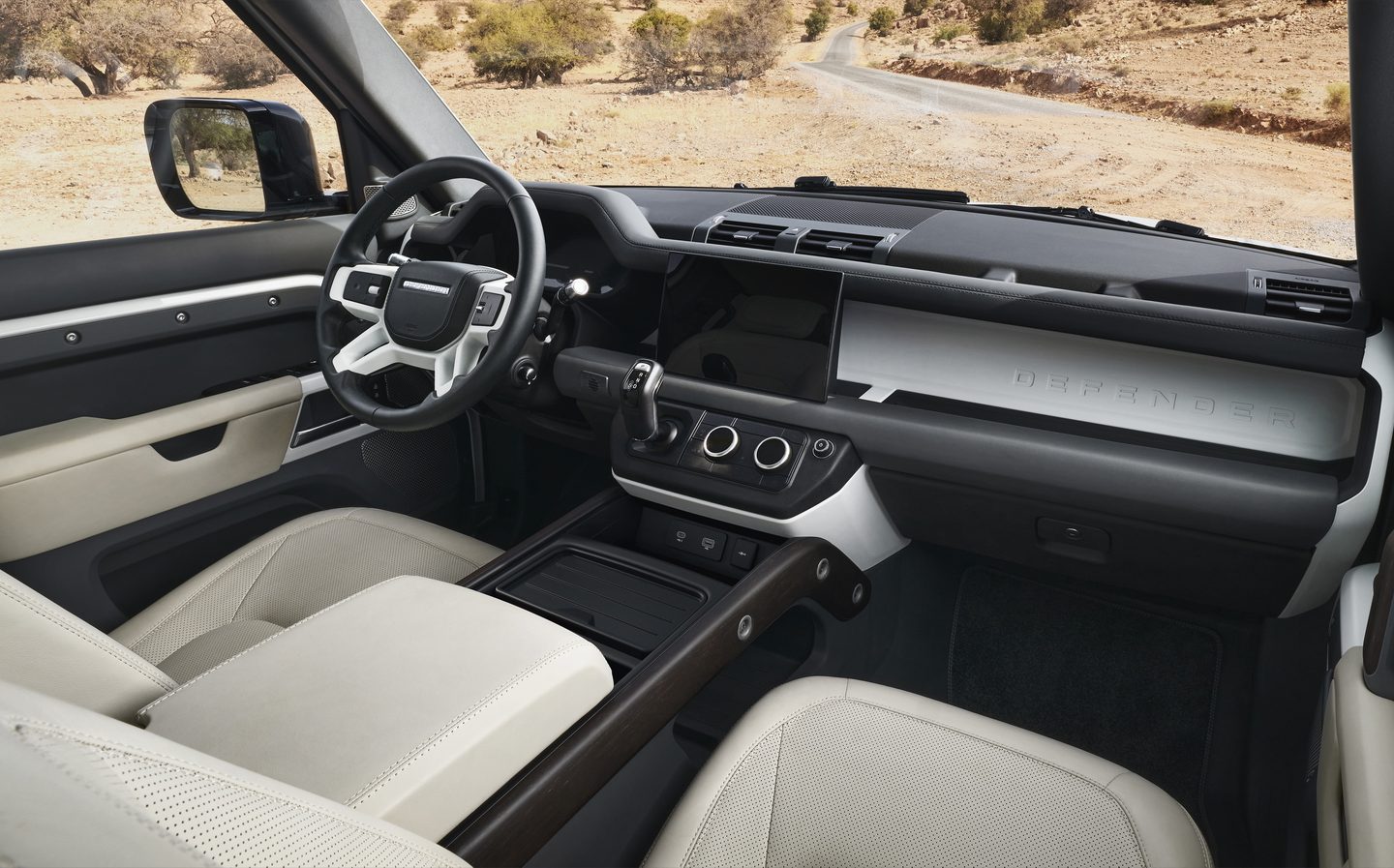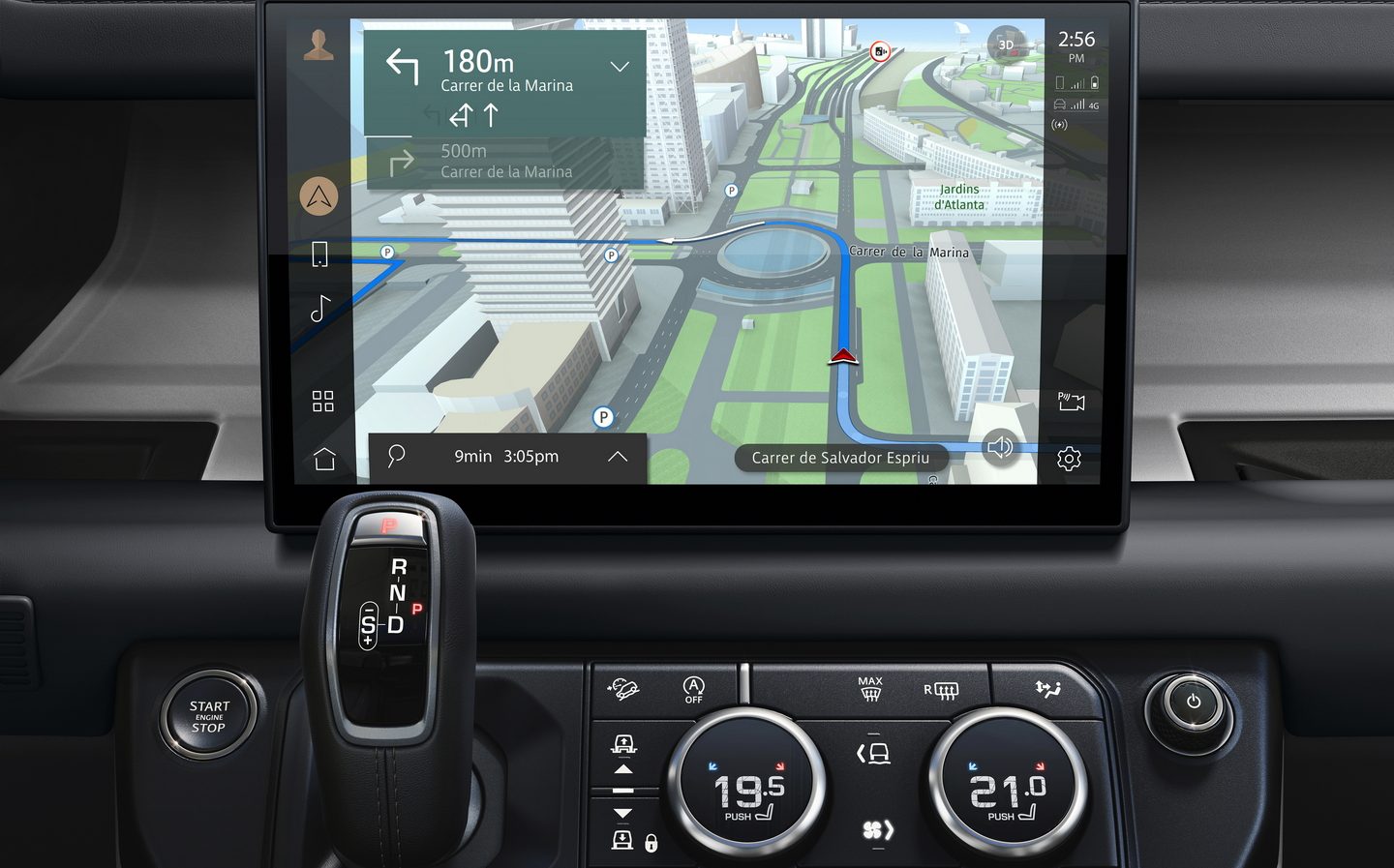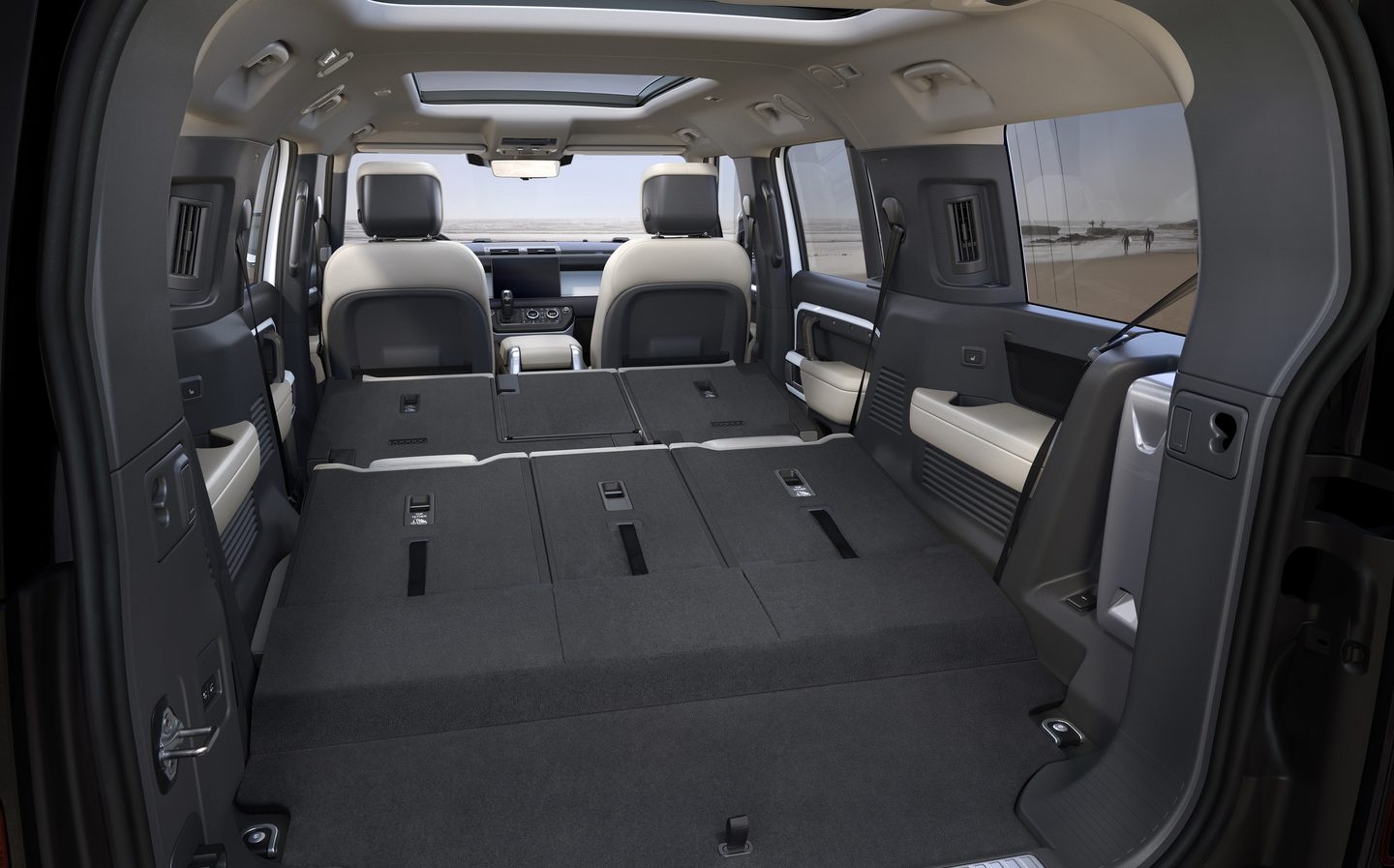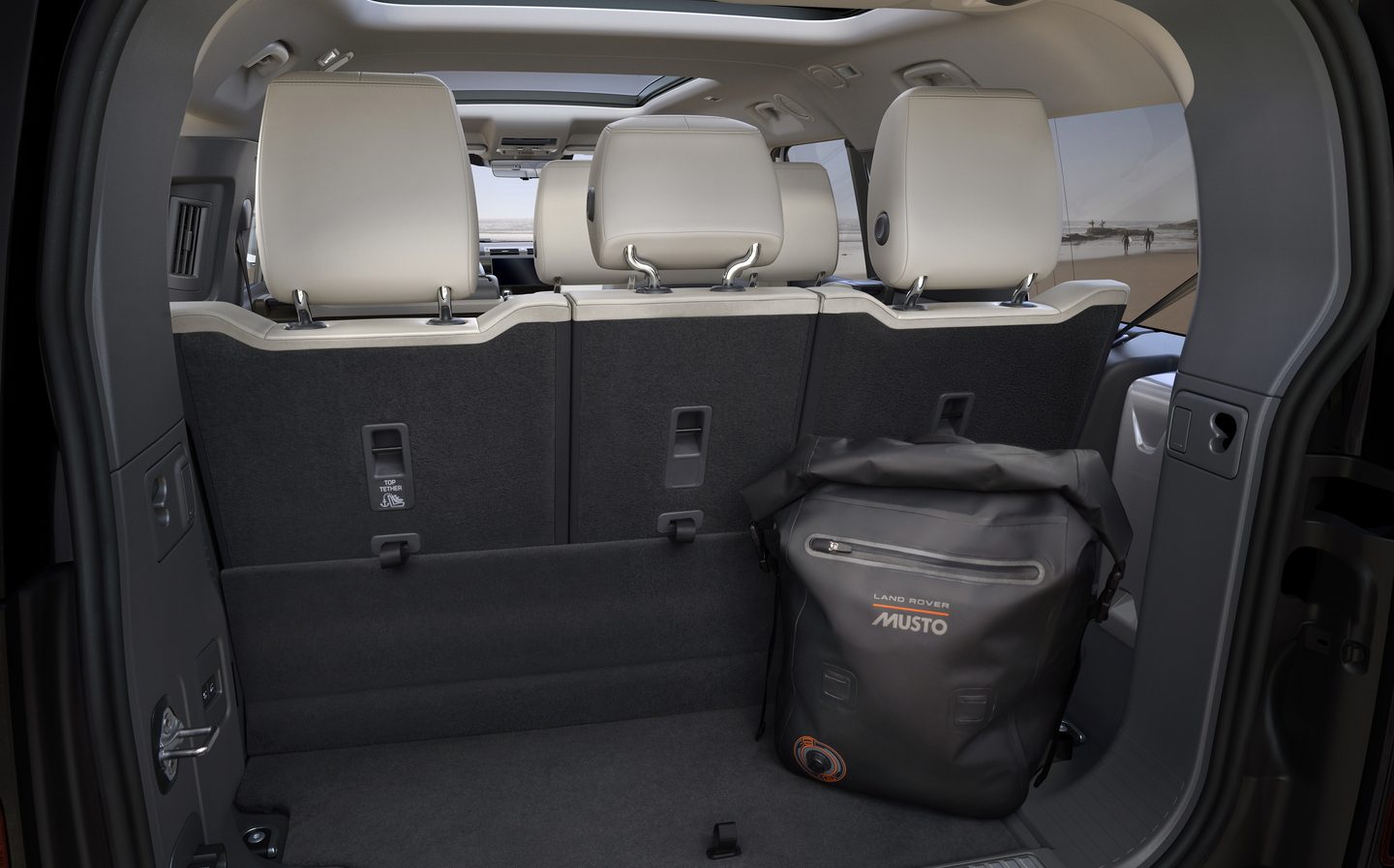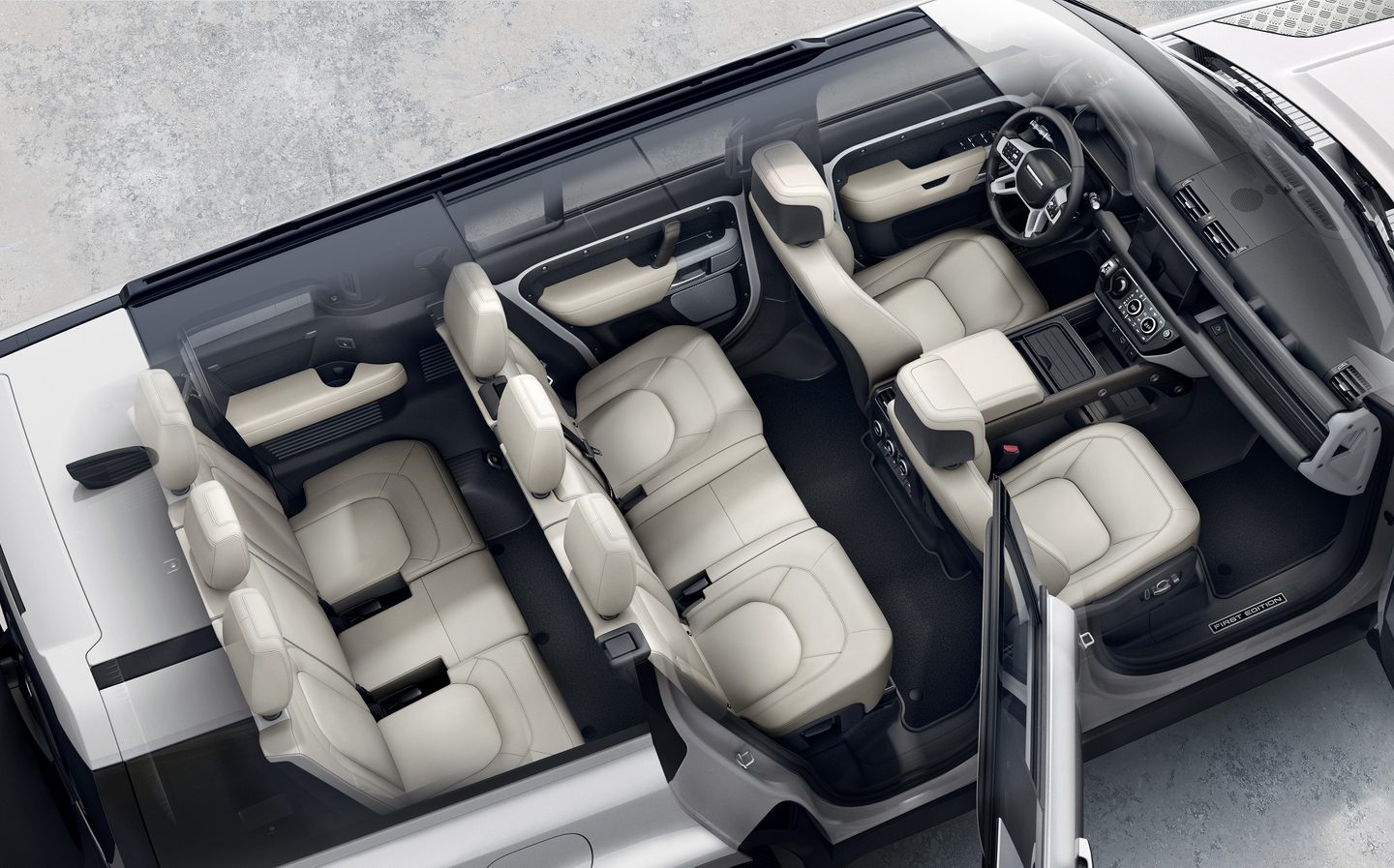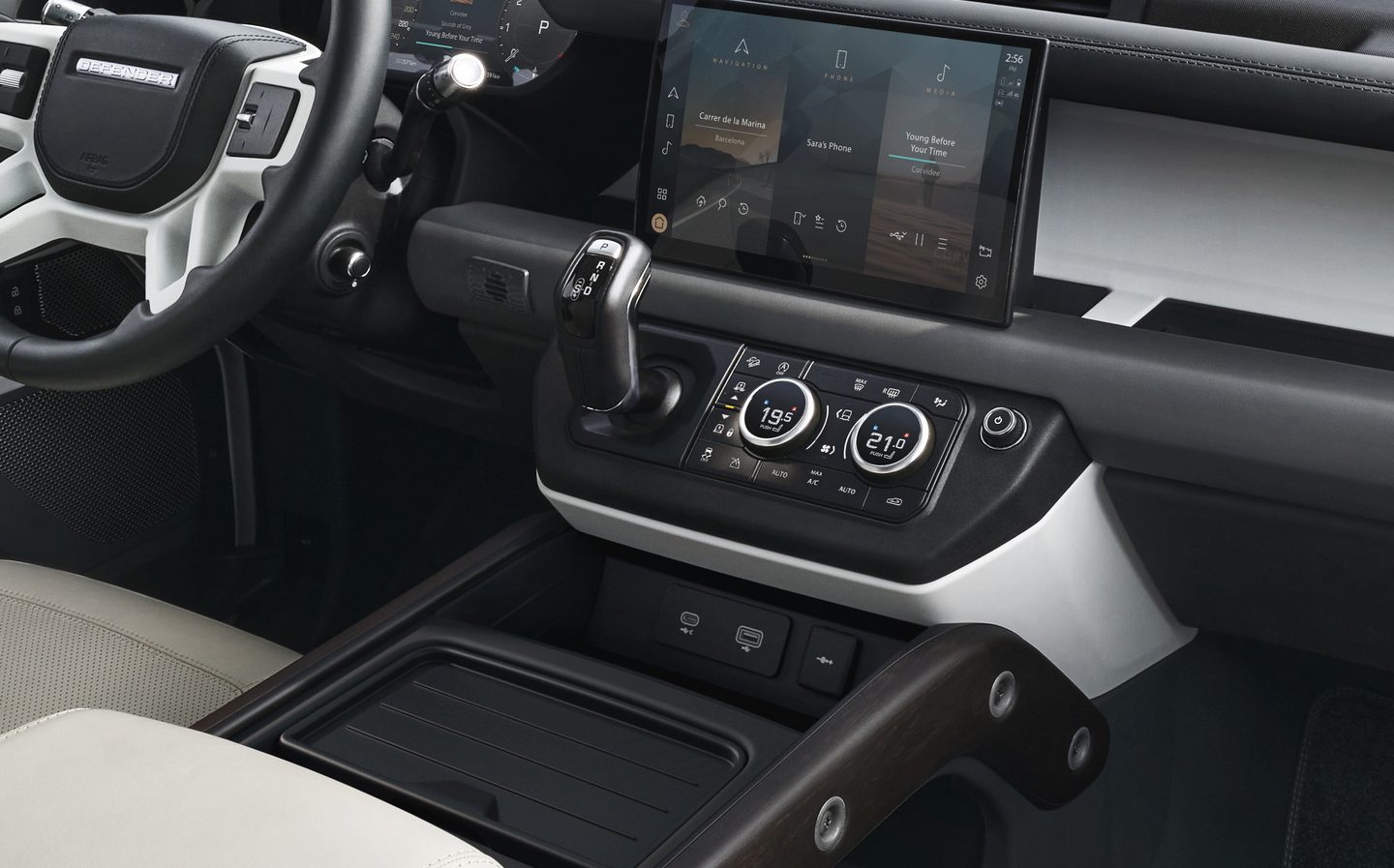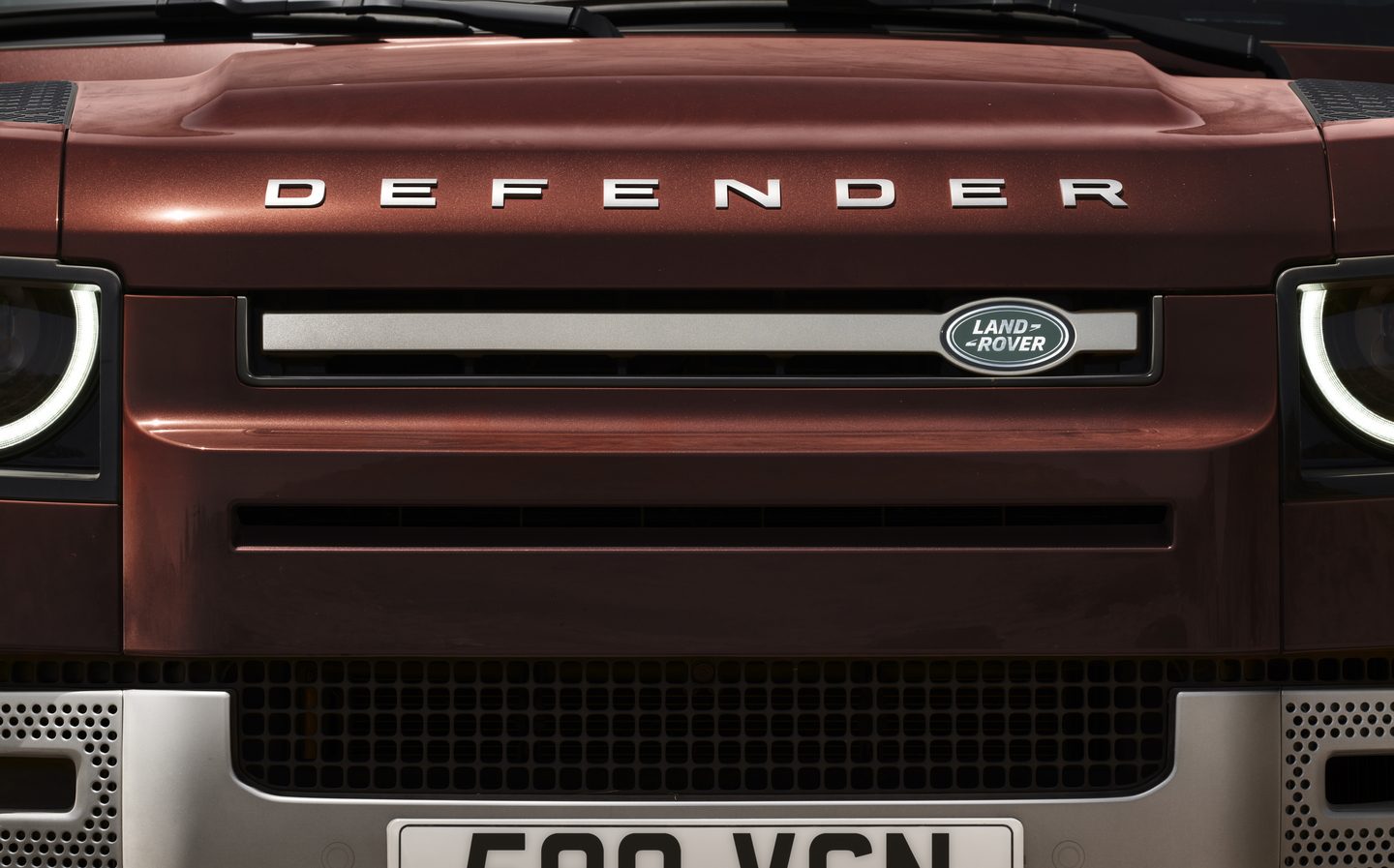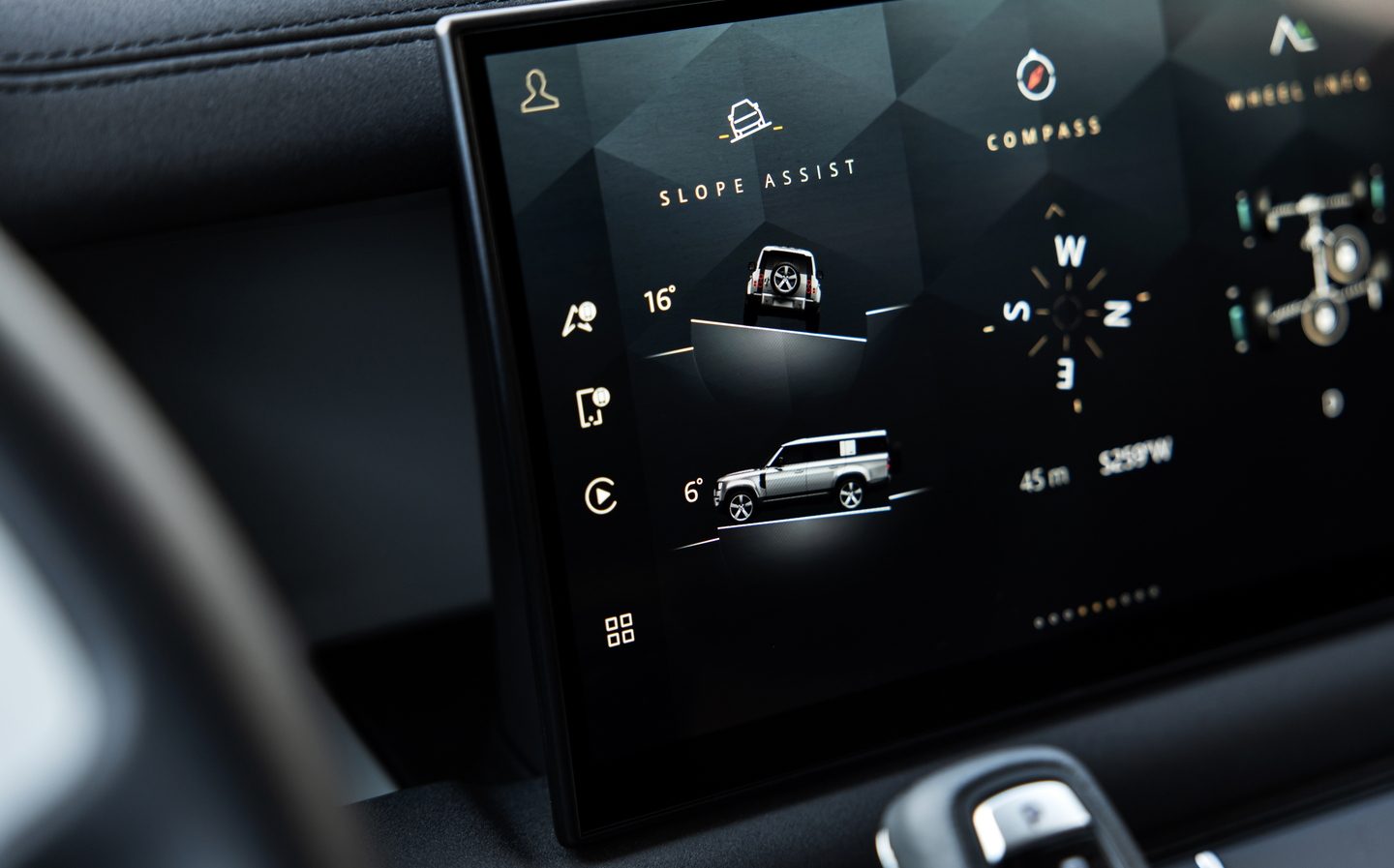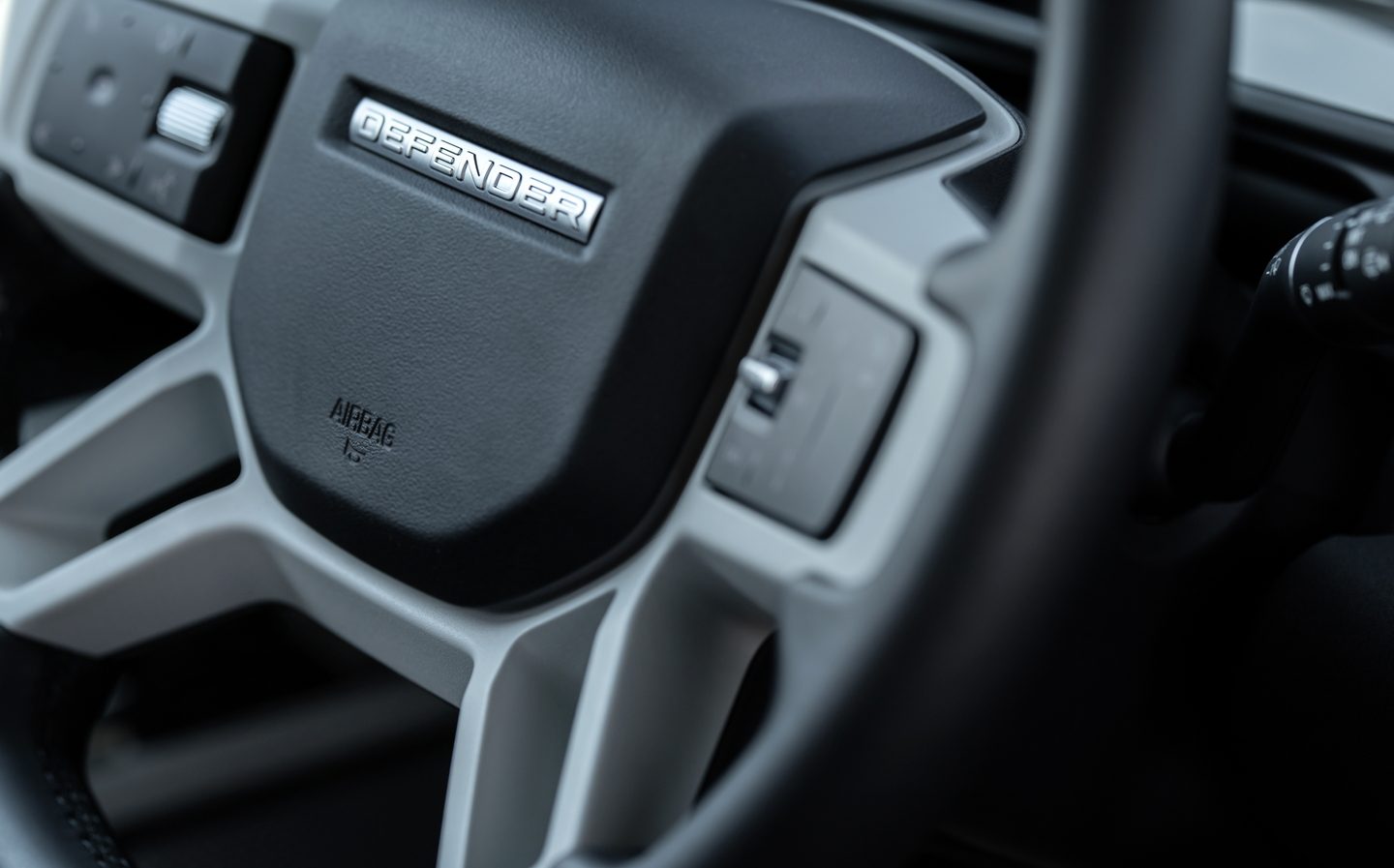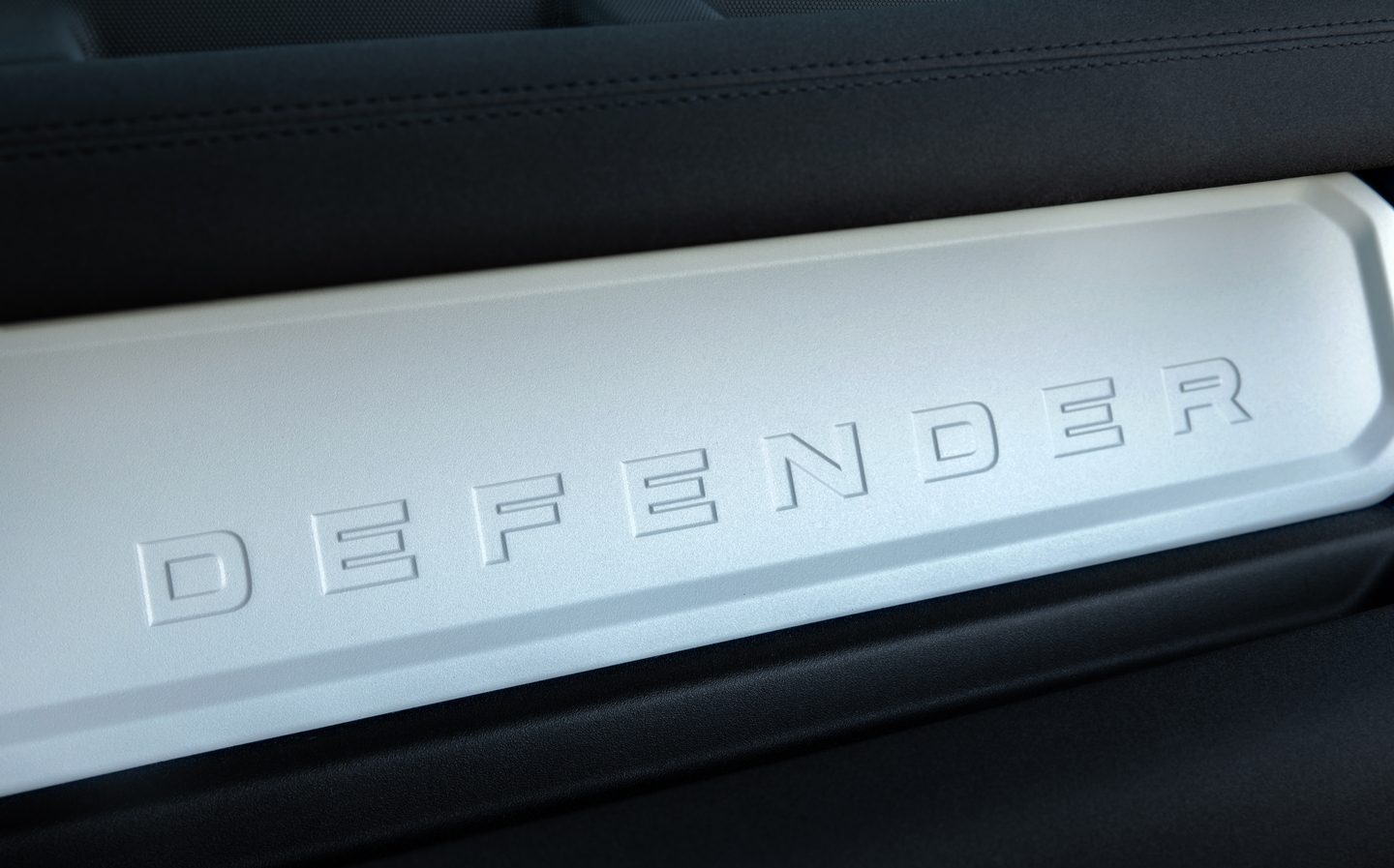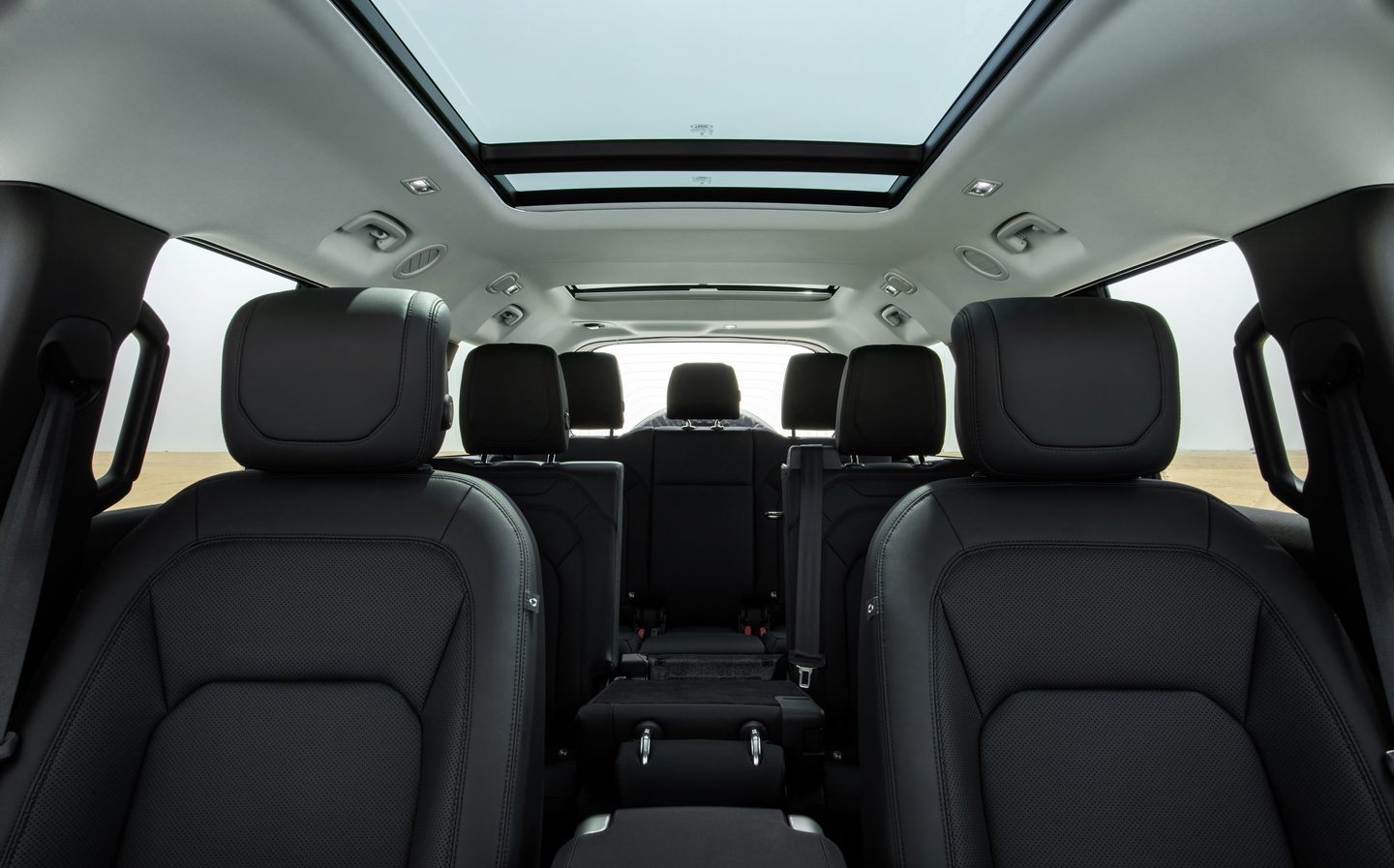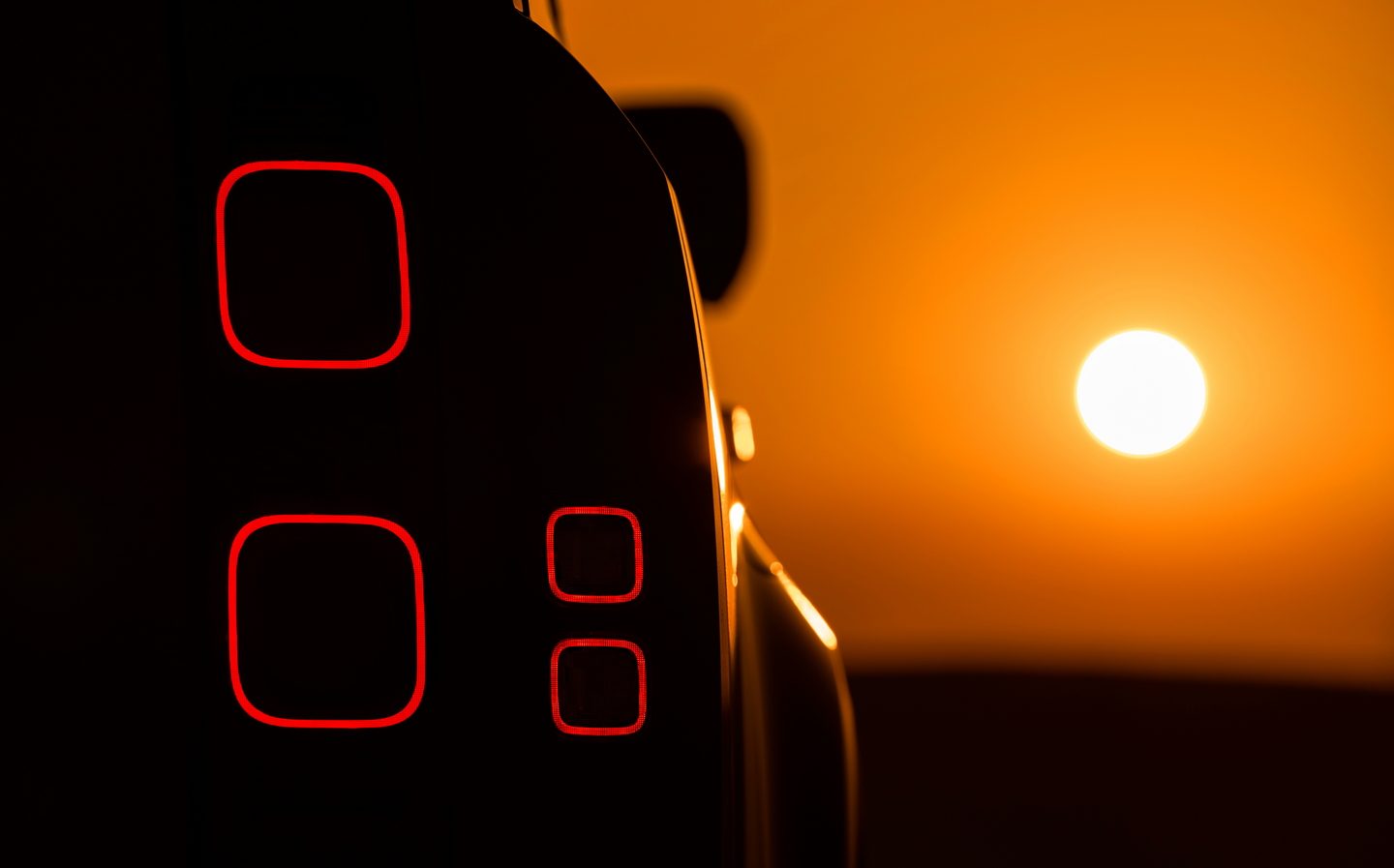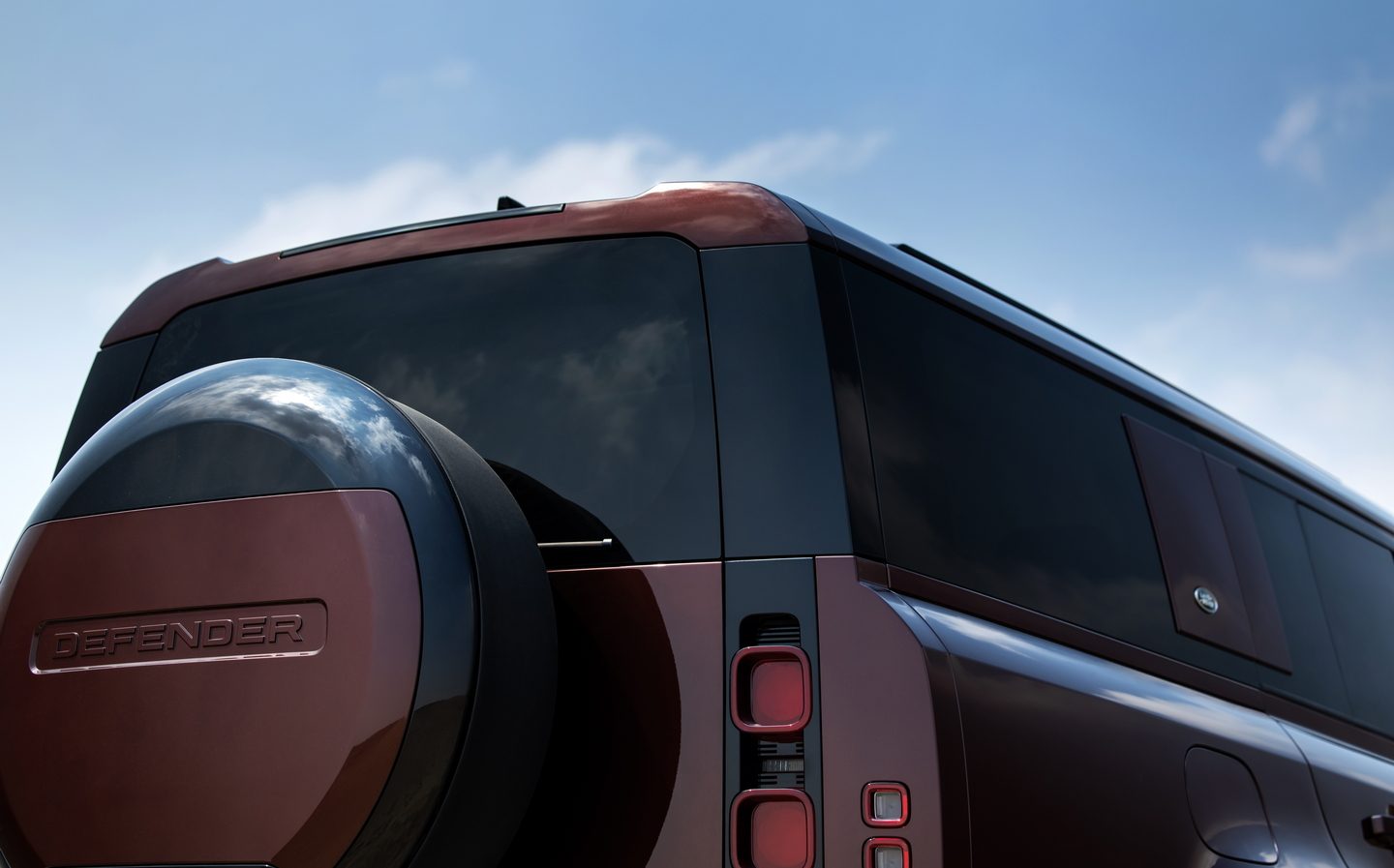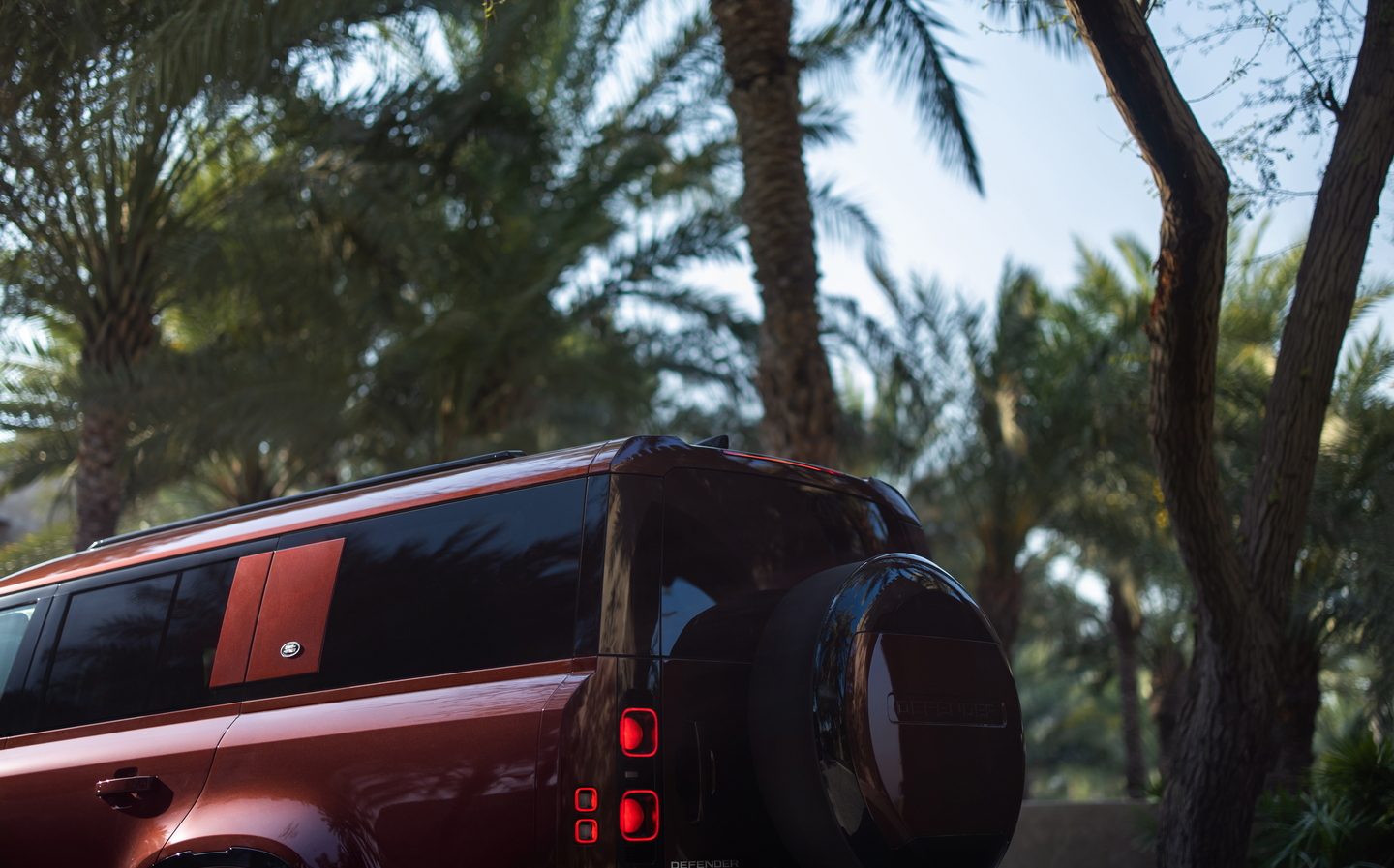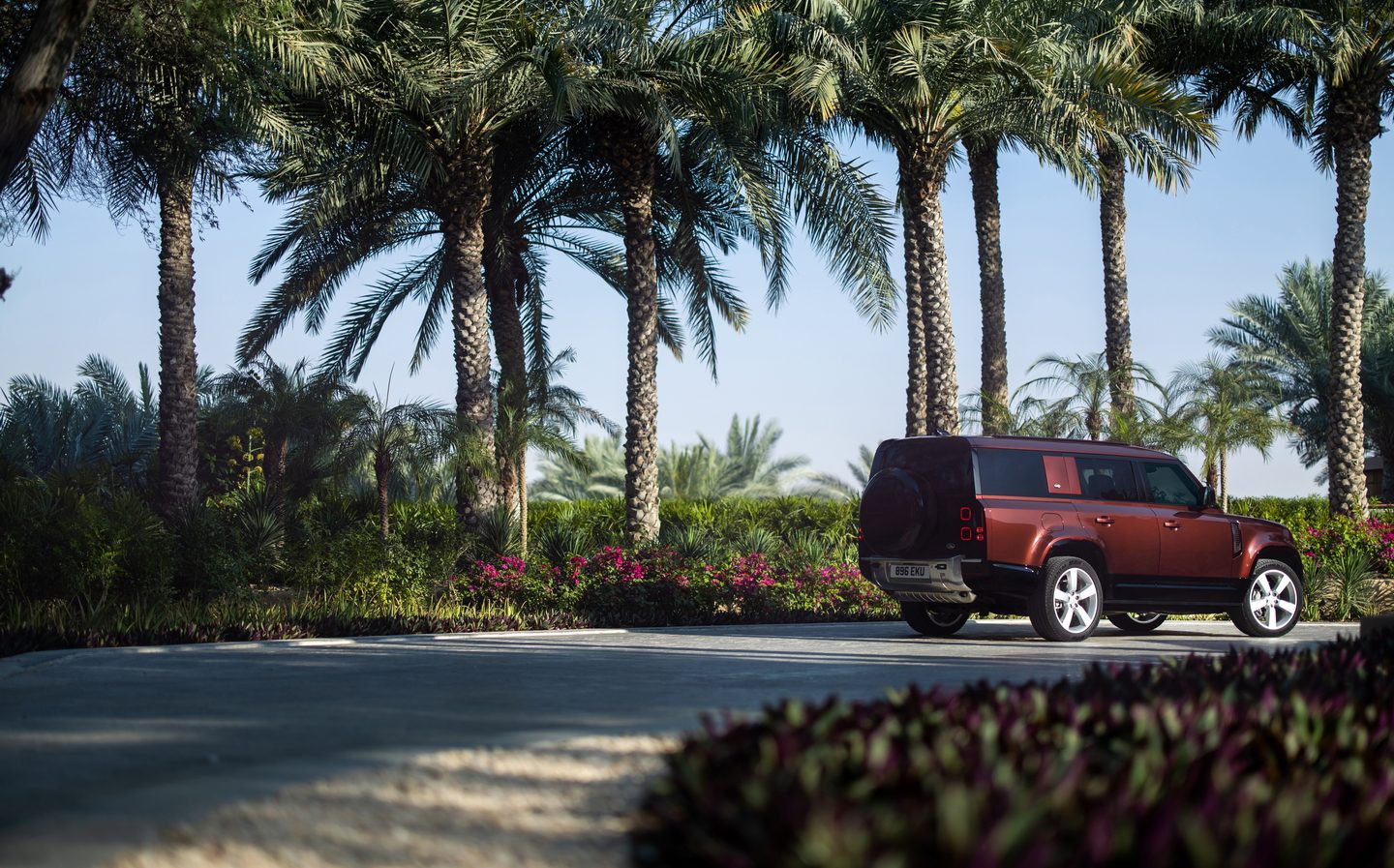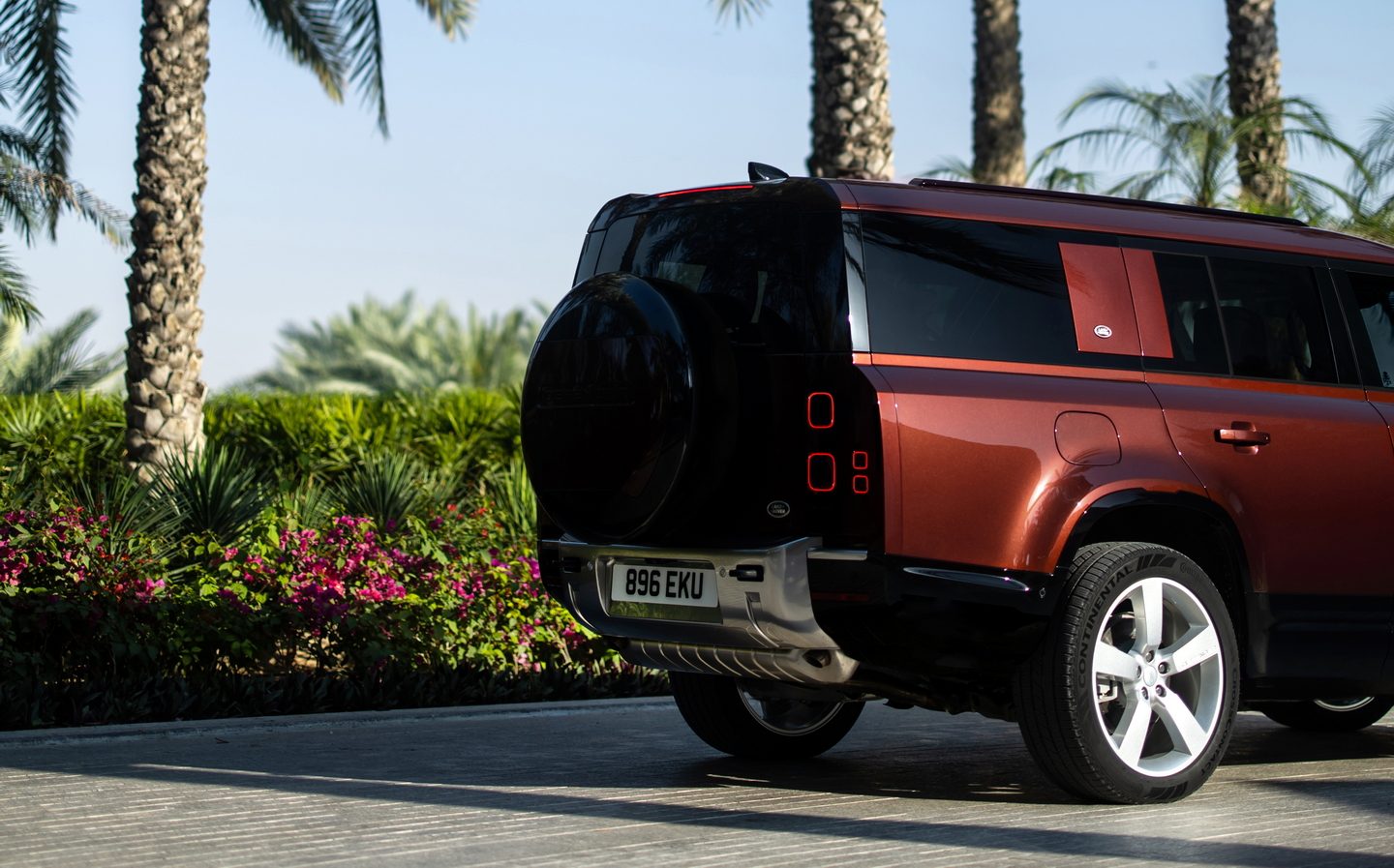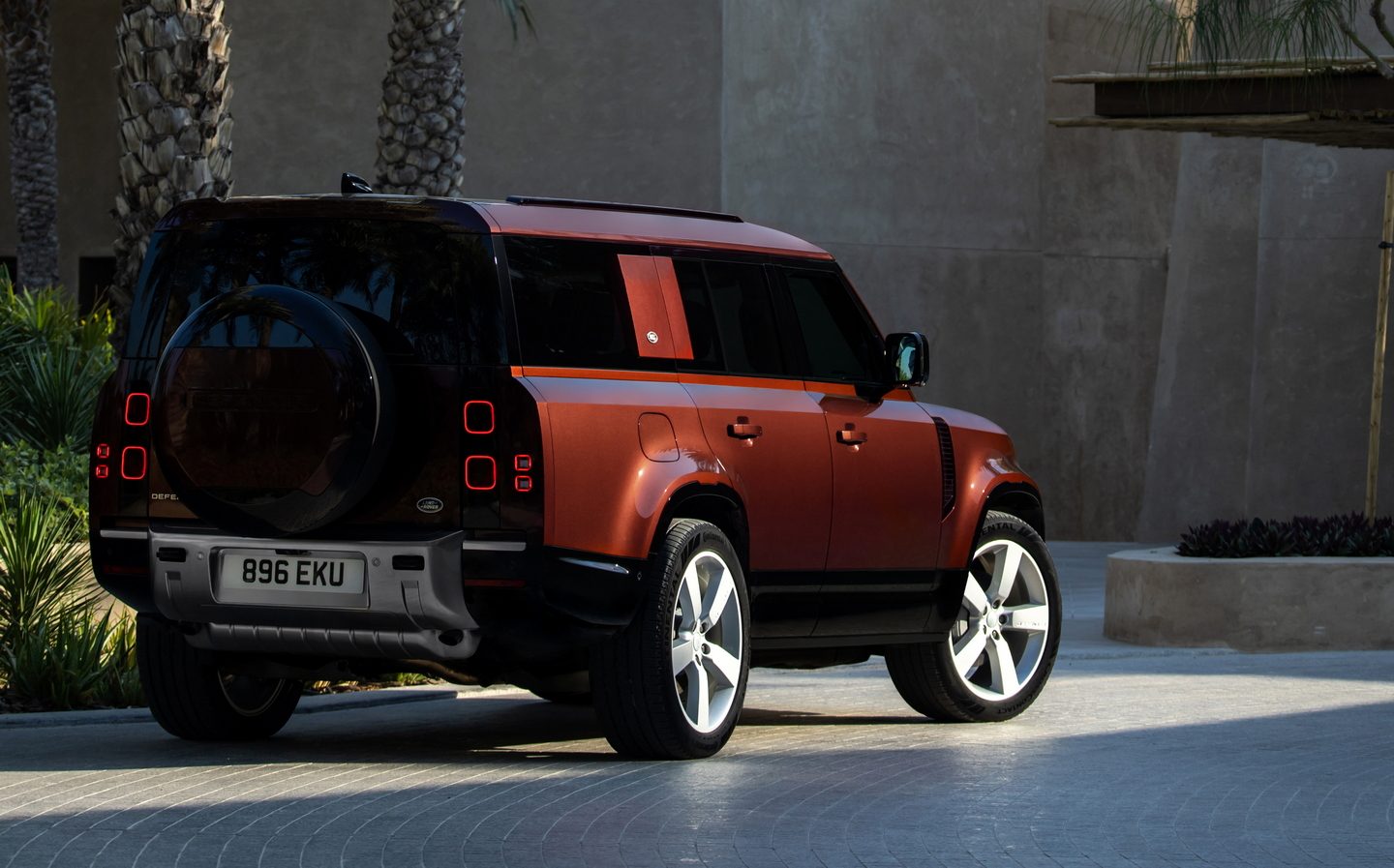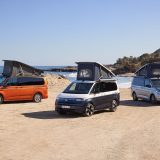Land Rover Defender 130 review 2023: It's the size that counts with lengthened Landy
Superfluous to requirements?
The reinvented Land Rover Defender has been accused of many things but being small is not among them. Nevertheless, Land Rover has followed its traditions and added an even longer 130 model to the existing 90 and 110 variants, and we’ve been behind the wheel.
Once upon a time, the numbers used to mean something, being loosely related to the length of the vehicle. The original 110 had a 110in distance between the bottom of the front and rear wheels, while the 90 measured 93 inches from one axle to the other. The 130, meanwhile, used to have a 127in “wheelbase”, as we call it.
Those numbers don’t mean quite as much now — the new 130 has the same three-metre (119in) wheelbase as the current Defender 110 — but there’s still a noticeable size difference between the three cars. So much so that while the three-door ‘90’ is just 4.3m long, the new 130 measures 5.1m from tip to tail. And that’s before you include the classic rear-mounted spare wheel.
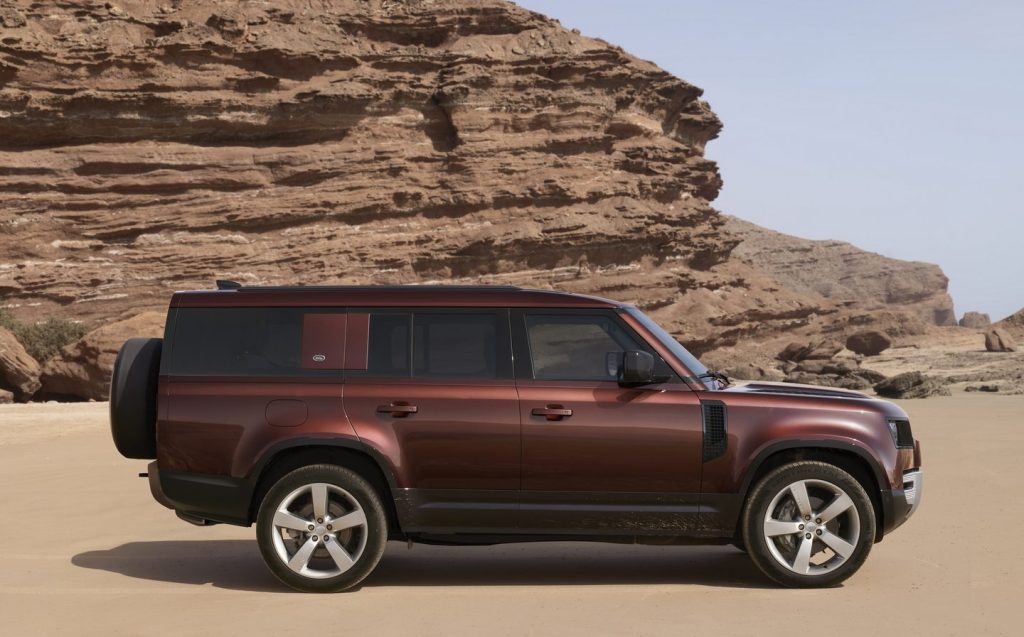
But the extra length means extra space, and the 130 now has enough carrying capacity for eight people, or a bigger boot, depending on whether you choose to fill the rear with people or stuff. The question is, did the Defender need to grow so much? And is the 130 worth the premium over the 110 — a car already offered with seven seats?
Exterior design and rivals
From some angles — namely head-on and rear-on — the Defender 130 is identical to every other Defender. Only when you catch a glimpse of the side profile is the extra length really noticeable. Perhaps surprisingly, given the 130 is around a foot longer than the 110, the extra length is pretty well hidden and the casual observer might not see the difference immediately. But look closer and there’s an additional massive rear panel compared with the 110.
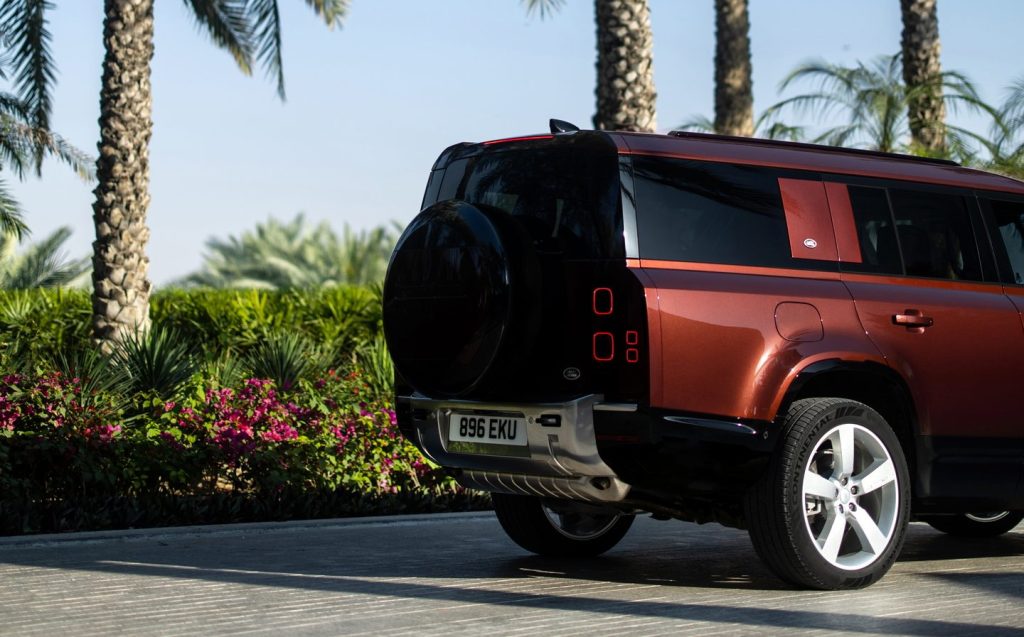
In many ways, it’s testament to Land Rover’s styling department that the 130’s length is so well hidden. The new Defender has taken a bit of flak at times — mainly because it isn’t its predecessor — but in isolation it’s a pretty attractive design, with its modern, chunky image and a range of accessories available.
It seems to have sparked a trend among the Defender’s rivals, with the next-generation Toyota Land Cruiser expected to get boxier and more retro in its styling. And of course, the Jeep Wrangler is already a classic shape. Neither car, however, offers quite as much space as the Defender. Good luck finding a new 4×4 that’ll carry as many people and offer the same off-road capability as this 130 can.
Interior and practicality
From the driving seat, the Defender 130 feels much the same as any other current-generation Defender. There is the same amount of space and a similar atmosphere, with an identical dashboard design using the same materials.
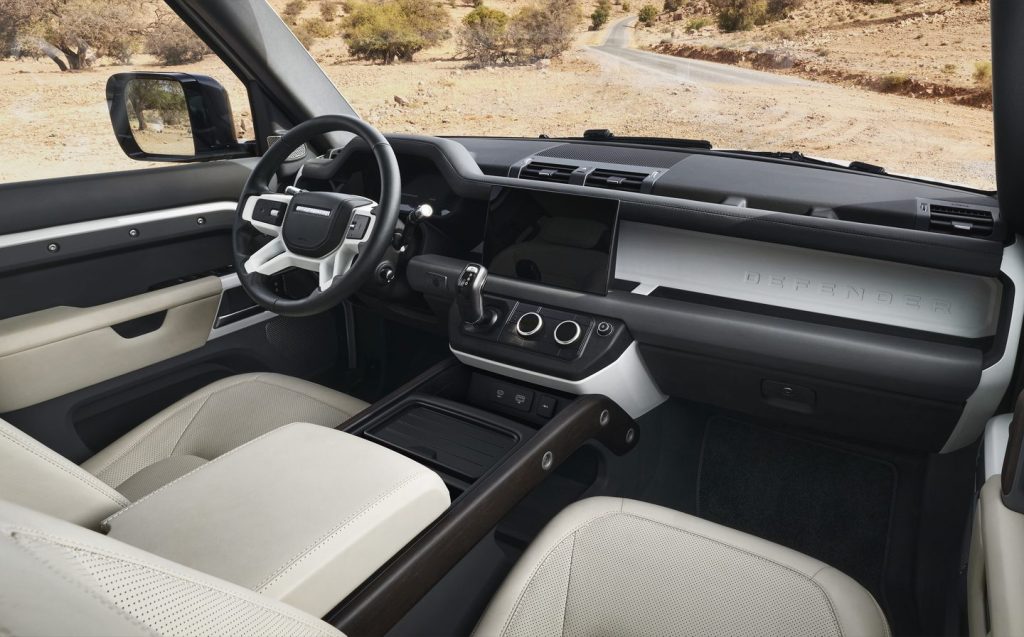
That means it’s a slightly odd cabin for something that costs the best part of £70,000, with little in the way of wood, aluminium or leather.
Instead, while there is leather seat upholstery, the dashboard is almost entirely made from rugged plastic, the idea being you can mop the car out when it gets a bit mucky. The result is an interior that doesn’t feel quite as premium as you might expect, although it’s still pretty robust. Only a few items of switchgear — and there aren’t that many, thanks to the central touchscreen — feel a little lightweight.
Anyway, the big differences are found further back, where the Defender 130 is offered in a choice of two different layouts. Whereas the Defender 110 can be had with five or seven seats, the 130 can be fitted with five or eight seats, with enough space for a central seat in the boot. Either way, you still get a respectably sized luggage bay.
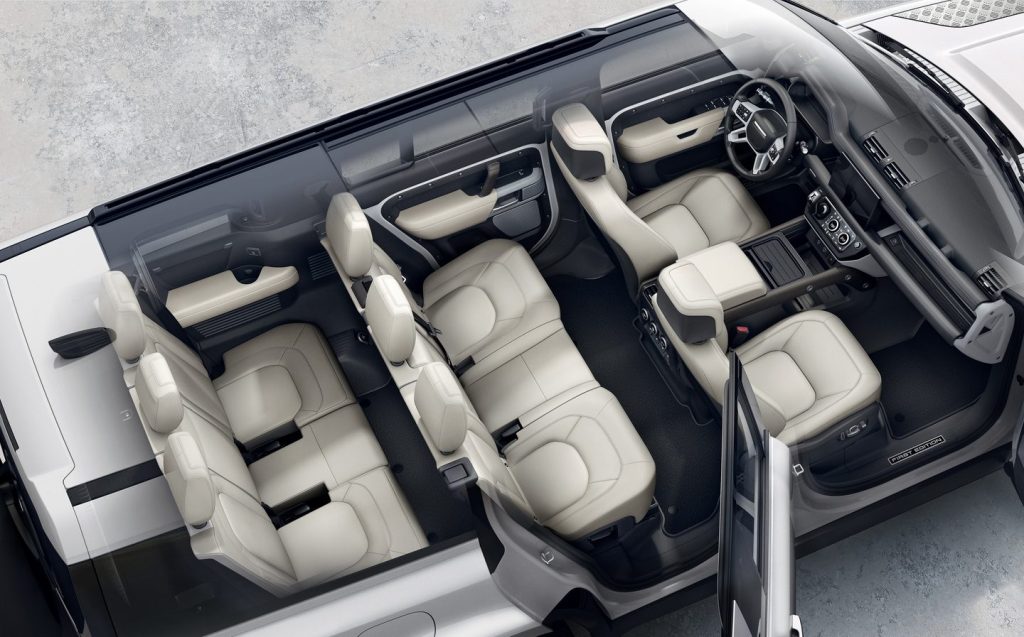
In fact, with all eight seats in place, the 130 still has roughly the same boot space as the now-defunct Ford Fiesta, at 290 litres. It isn’t enough for a family holiday, but for the school run or a shopping trip it should do the job.
And in that configuration, the Defender 130 really is an eight-seater. Sure, you wouldn’t want to spend long in the rearmost central seat — certainly not as an adult — but eight adults could make a quick jaunt to the pub without suffering too much discomfort. Six adults could sit in there very happily, and carrying kids would be a doddle.
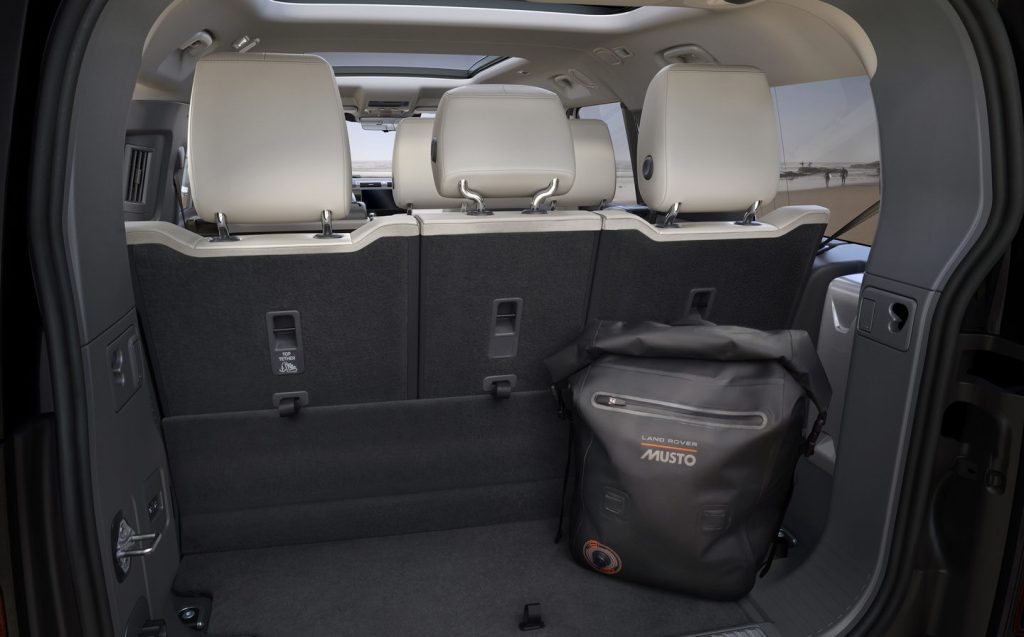
But as well as offering slightly more passenger space than the 110, the 130 is also designed to offer more cargo space in five- and two-seat forms, although you probably won’t need to use the two-seat configuration very often.
With more than 1,000 litres of luggage space in five-seat form, the 130’s boot is massive. In fact, the only real practicality issues are the rear visibility — you can’t see anything out of the back window if the rearmost seats are occupied — and the fact that those seats don’t fold flush into the boot floor. That makes loading up more troublesome than it should be, particularly with heavy items that have already been lugged over a fairly tall bumper to get anywhere near the boot.
Technology and safety
Technology hasn’t always been a strong suit for Land Rover but new the Defender comes with the latest version of the brand’s Pivi family of infotainment systems. This means you get a big, attractive central touchscreen and a digital instrument display, both of which look sharp and modern.
Perhaps the instrument cluster isn’t the most function-rich system on the market, but it’s clear and easy to comprehend, which is the most important thing.
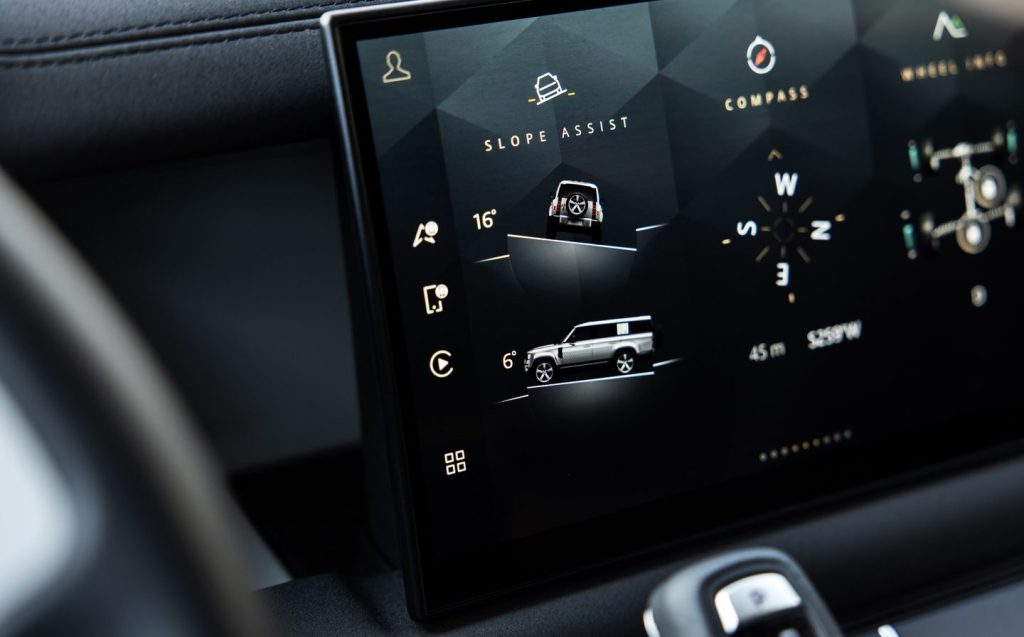
The touchscreen is somewhat more impressive, using Land Rover’s latest software to provide a clear, crisp and easily-navigated system. Admittedly, it has its hiccups and isn’t always the most responsive thing on the planet, but it’s no worse than most of the other systems on sale and is considerably better than those fitted to the Defender’s closest rivals — the Toyota Land Cruiser and the Jeep Wrangler.
It is worth switching the system to its ‘dark’ mode, though, because some of the icons look a little clearer against the darker background than the standard pale colour.
But the tech goes deeper than just the screens. Land Rover has also made use of the two rotary controls in the middle of the dash to carry out a number of functions. They can be used to control the heated and ventilated seats on either side, but push them in and they switch to temperature adjustment duties and fan speed settings. And if you press another button, you can use them to adjust the Terrain Response 4×4 system. The execution is pretty neat.
Performance, power output and acceleration
Defender 130 customers get a choice of engines but there’s only really one version you should consider. That’s the D300 model tested here, which happens to be the entry level powertrain in the Defender 130 range. Under the bonnet is a 3-litre, six-cylinder diesel engine that churns out up to 296bhp. It takes the 130 from 0-62mph in about seven seconds.
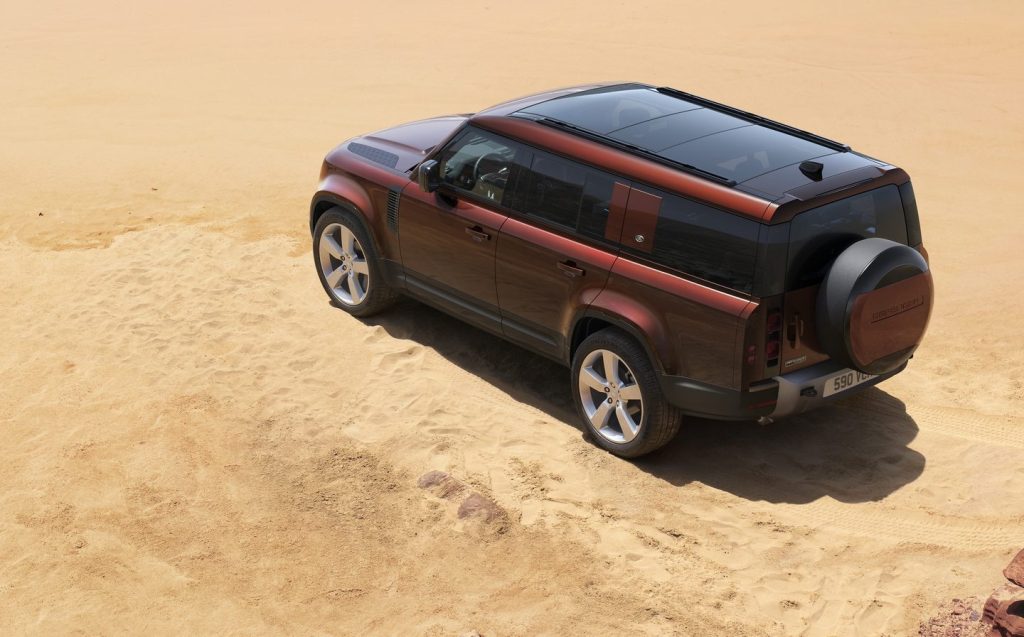
Naturally, you can go faster — Land Rover is also selling 3-litre and 5-litre petrol versions of the 130 — but choosing one of those variants would be a decidedly expensive decision. Where the diesel might return just over 30mpg on a long run, you’ll be lucky to get 20mpg from the most powerful petrol engines.
Clearly, then, the only sensible course of action is to choose the diesel, which feels perfectly equal to the task of hauling the heavy 130 around, even if it isn’t what you’d call brisk. Perhaps it’s partly down to the eight-speed automatic gearbox, or the simple physics of dragging a 2.5-tonne 4×4 down the road, but it feels occasionally sluggish when pulling away.
Thankfully, however, it has more than enough grunt for low-speed off-road manoeuvres, and it’s much perkier once you’re up to speed on the motorway.
It’s even reasonably refined for something so rugged, with the natural smoothness of the in-line six-cylinder engine allowing it to settle into a muted hum when you’re up and running. It’s a bit noisy when you start up and when you’re moving off, though.
Ride and handling
Despite being a little heavier than the 110, the 130 feels much the same most of the time. It lumbers about town in a similar fashion, although you will need to be a little careful of the length, which is substantial, and the full-size spare mounted on the back makes things tricky at times. To the surprise of nobody, manoeuvring something this big is not always easy, and if you’re used to smaller cars, it will take a bit of getting used to.
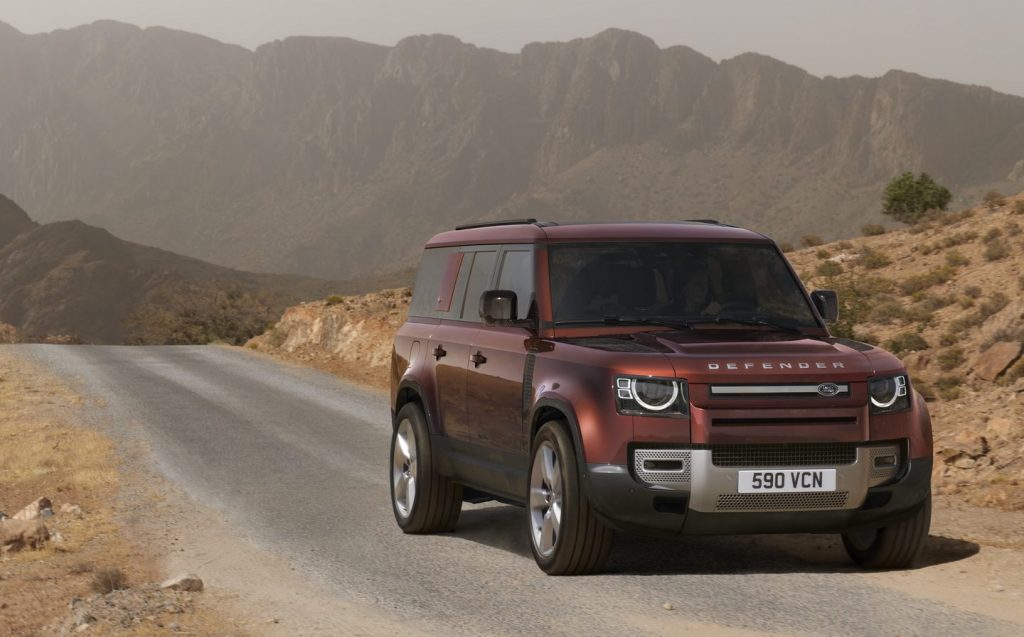
All that said, on the motorway or the open road, the Defender 130 feels just like the elongated 110 it is. It’s much more refined and more precise than the old Defenders, but everything is relative. It isn’t quite as pillowy soft as you might hope, either, although again, it’s much more comfortable than its predecessor, and much easier to use on a long journey.
More credit should go to the brakes, which are much more effective than they have any right to be considering the immense weight of the car. No doubt they’re engineered with towing heavy loads in mind.
The big draw of the Defender, however, is its off-road capability, and the 130 delivers that in spades. It comes with all the same kit as the 110, including a clever all-wheel-drive system and the Terrain Response functionality that allows the driver to tell the car which surface it’s traversing so it can set itself up accordingly. The 130 is more or less unstoppable over any terrain, just like every other model in the Defender range.
There is a small catch with all this extra length, though. While the 130 shares a wheelbase with the 110, the extra length means it won’t climb or descend quite such steep slopes. And whereas the 110 will tow a 3,500kg trailer, the 130 can only tow up to 3,000kg. For many customers, these will be minor issues, but they will tip the scales in favour of the 110 for some.
Pricing and on-sale date
Although the old Defender made its name as a car for farmers and the National Trust, the new model is aimed at a hugely different market. And it’s priced accordingly.
Now well and truly a Chelsea tractor — albeit one with plenty of off-road capability — the new Defender does not come cheap. Even the three-door ‘90’ comes in at almost £60,000, and the 130 starts at just over £73,000.
The more upmarket D300 X-Dynamic HSE model we tested cost more than £80,000 before you so much as look at the options list.
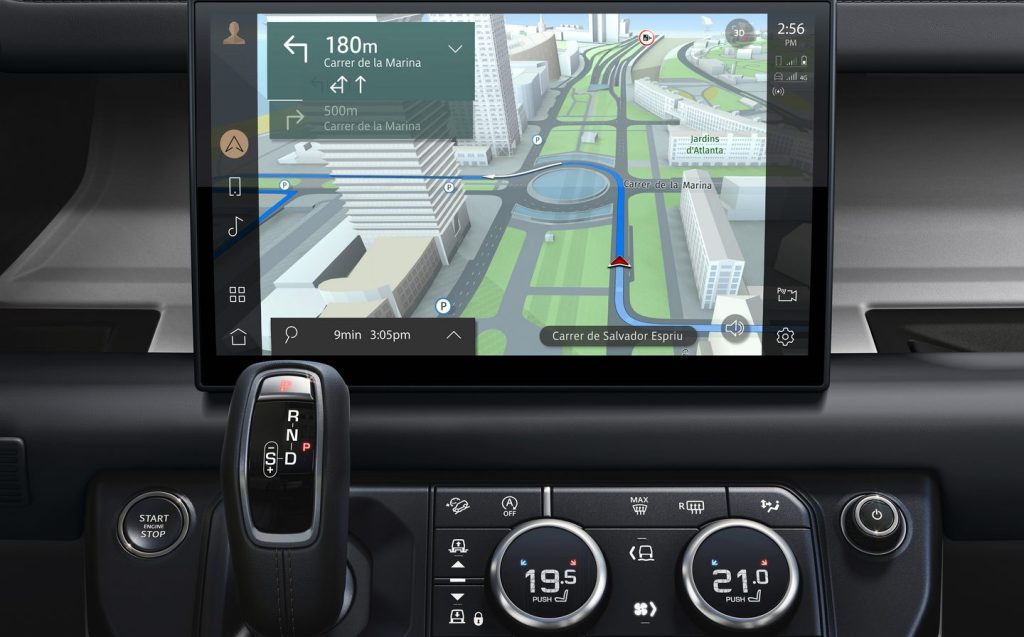
That’s a lot of money, but you do at least get lots of kit as standard, as well as plenty of space. In fact, even the cheapest 130 comes with leather upholstery, heated seats and climate control, as well as 20in alloy wheels, navigation and a Meridian sound system.
Step up the range a bit and you can have a few more goodies, but you don’t really need them. Some customers will want the aesthetic upgrades, though, such as the Explorer Pack with a side-mounted equipment carrier, mud flaps and the Expedition Roof Rack, as well as a snorkel up the side of the windscreen. And as is most often the case, if you can afford a £70,000 car you’re likely to be happy to spend over £80,000 to get all the kit.
Verdict: Land Rover Defender 130 review
If you want a Defender and if you regularly carry six adults and all their stuff, you need the 130. And you’ll probably be happy with it. You’ll certainly prefer it to the rattly old 130 most of the time.
But if that doesn’t sound like you, there’s really no need to put anything this big on the driveway. After all, the Defender 110 is hardly a tiddler in comparison, and it’s big enough to carry kids in the rearmost row. It’s also considerably cheaper than its oversized sibling, not to mention fractionally better off-road.
There’s nothing wrong with the 130 per se — it has plenty of plus points — but it just feels a bit superfluous in most situations.
Related articles
- If you enjoyed our review of the Land Rover Defender 130, you might like to read about the new Land Rover Defender becoming a sales hit
- Here’s what Jeremy Clarkson had to say about Land Rover Defender 130
- Range Rover 2022 review: Even better for wafters and drivers
Latest articles
- Jim Farley, Ford’s racing driver CEO: Porsche has outsmarted us in the past; now it’s time to outsmart them
- Scalextric adds Ford Anglia from Harry Potter, John Wick’s Mustang and a gold James Bond DB5
- Best-selling cars 2024: The UK’s most popular models
- New Volkswagen California camper based on car underpinnings and available as a hybrid
- F1 2024 calendar and race reports: What time the next grand prix starts and what happened in the previous rounds
- Sci-fi inspired Ferrari 12Cilindri replaces 812 Superfast, powered by 819bhp unassisted V12 engine (video)
- New Renault Symbioz adds to French carmaker’s fresh crossover SUV assault
- Red Bull confirms Adrian Newey’s departure, but where next for the F1 designer?
- Lotus shows off its work on British Cycling’s Paris Olympics bicycle


